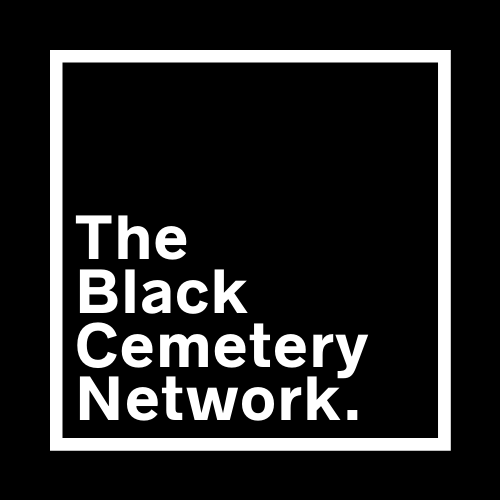SITE DIRECTORY
To learn more about any of the BCN sites listed below, click “Read more” to view individual site briefs. To search for a specific BCN site, use the search bar below:
Old Asbury Cemetery
OLD ASBURY CEMETERY
FOUNDED: 1811
ADDITONAL NAMES: N/A
AFFILIATION(S): N/A
HISTORY:
Nearly abandoned, this cemetery is on the site of the Asbury (Methodist) Chapel, which was discontinued in the 1850s and no longer stands. In early years the congregation was both white and Black. Heading south on Route 13, the sign is on the right on a slight rise above the highway a short distance north of the Boyds Corner intersection. There are no known records of the Asbury Chapel congregation. About 1/4 of the cemetery is cleared. It extends downhill toward a small creek and has no obvious entrance road. The upper section is the original cemetery.
Around 1928, people associated with Zoar Methodist Church in Odessa formed a board of trustees, bought an additional acre extending down the hill and created Asbury Cemetery Corporation several years later. This became a Black cemetery for the community centered around Zoar and is identified on State Highway maps as "Colored Cemetery." The ownership of the parcel is not clear since the Asbury Cemetery Corporation has disappeared from state corporate records and IRS nonprofit listings.
The cemetery has been virtually unused since 2000. The Friends of Zoar, a nonprofit restoring the ex-church as a culture and history center, has an active interest in the cemetery's future. Zoar ME was donated to the nonprofit Friends of Zoar, Inc., in 2022 when the Conference declared it surplus. Renovation work as a history-cultural-community center has begun.
BCN Contact Information:
Friends of Zoar
friendsofzoar@gmail.com
African Union Church Cemetery
AFRICAN UNION CHURCH CEMETERY
FOUNDED: 1835
ADDITONAL NAMES: N/A
AFFILIATION(S): N/A
HISTORY:
Property bought in 1835 by five Black residents of Polktown, the adjacent free Black hamlet: site of original small church. Polktown was one of the earliest free Black settlements in Delaware. The church later moved into Polktown proper. At least Five United States Colored Troops veterans are buried here, and a handful of other markers remain. The restored cemetery and memorial plaza come at the end of two decades of work and research. See www.africanunioncemetery.org and Facebook.
BCN Contact Information:
Friends of the AUCC
africanunioncemetery@gmail.com
Mount Olive Cemetery
MOUNT OLIVE CEMETERY
FOUNDED: 1899
ADDITONAL NAMES: Saint Peters, Old Union, Mother AUMP Church
AFFILIATION(S): None
HISTORY:
Mount Olive Cemetery sits on 13 acres just outside the city limits of Wilmington, Delaware. It holds the remains of approximately 13,000 Delawareans – the ancestors of Wilmington’s African American community. Active burials at Mount Olive began in 1899 and continued for another seven decades. But the history of Mount Olive begins long before.
Starting in the early 1800s, members of Rev. Peter Spencer’s congregation were buried on King Street in Wilmington, in a cemetery adjacent to Rev. Spencer’s church. Today, Peter Spencer Plaza in downtown Wilmington marks the location of the original church. But by 1861, further burials at that site were banned by city ordinance, and most of the graves were eventually moved to other cemeteries.
Thereafter, a number of small cemeteries, operated by various Black churches, sprung up in other parts of Wilmington and served the city’s African American population. Most can be found on an 1868 county map. They include: St. Peters Cemetery, 12th & Union Cemetery, Ezion Cemetery, Union Cemetery, and Old Union Cemetery (also called 12th & French Cemetery).
As Wilmington’s city limits expanded in the late 1800s and early 1900s, efforts to relocate Black cemeteries intensified. Old Union Cemetery records no burials after 1895. And in 1906, legal efforts were undertaken to condemn St. Peters Cemetery and neighboring Ezion Cemetery and convert the land into a city park.
By 1914, city leaders unfortunately succeeded in condemning all Black cemeteries inside the Wilmington city limits. Mount Olive was a fairly new cemetery at this time, and was situated outside the city limits, so it was not impacted by these actions. However, as the old Black cemeteries were razed, the disinterred remains and headstones were mostly brought to Mount Olive. In addition to accepting these older displaced remains, Mount Olive also received the majority of the city’s Black burials through the first half of the twentieth century. Burials at Mount Olive began to dwindle in the 1970s, as Delaware cemeteries became de-segregated. The last recorded burial was in September of 1987.
Today, Mount Olive holds the remains of veterans from the Civil War, Spanish American War, World Wars I and II, the Korean War and the Vietnam War. Doctors, ministers and educators are all buried there – along with thousands of working-class people who helped make Wilmington the thriving community that it is today. A conductor on the Underground Railroad rests at Mount Olive, as do the parents of Louis Redding, the lawyer who successfully argued Brown v. Board of Education before the U.S. Supreme Court in 1954.
BCN Contact Information:
Regina Barry
rmbarry1066@earthlink.net
http://freepages.rootsweb.com/~rbarry4145/genealogy/MtOliveCemetery/MtOliveHome.html




